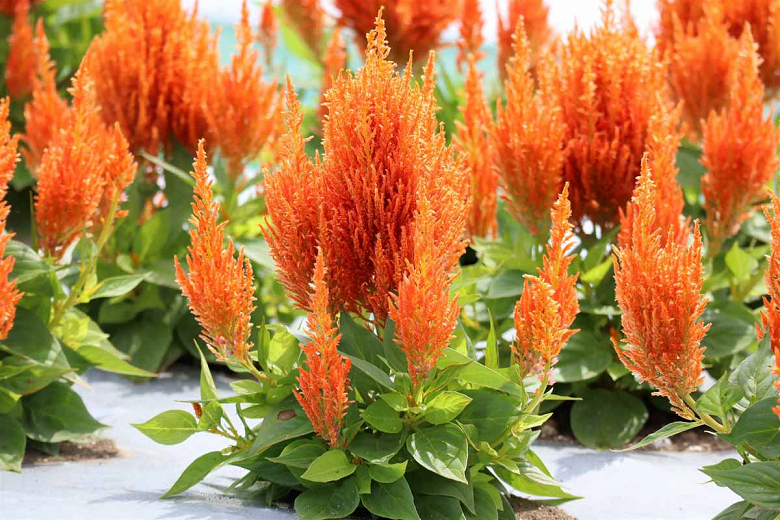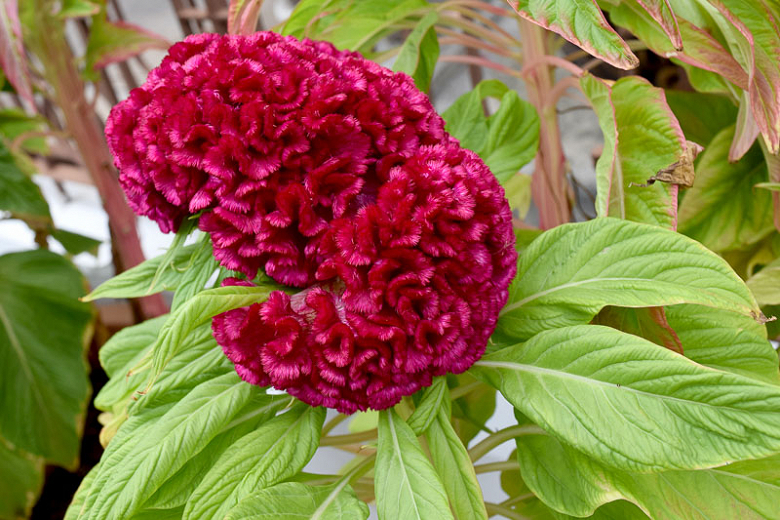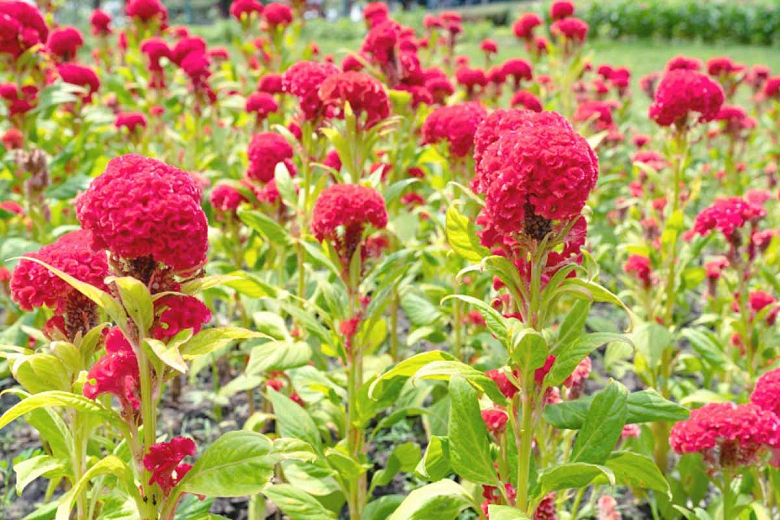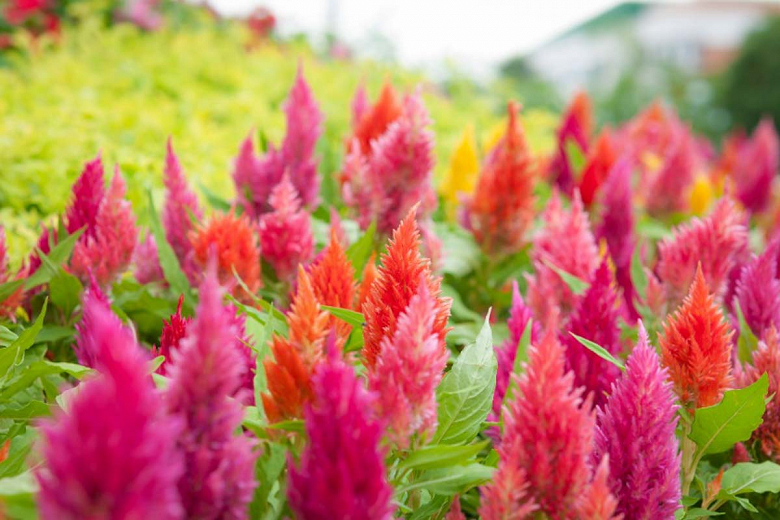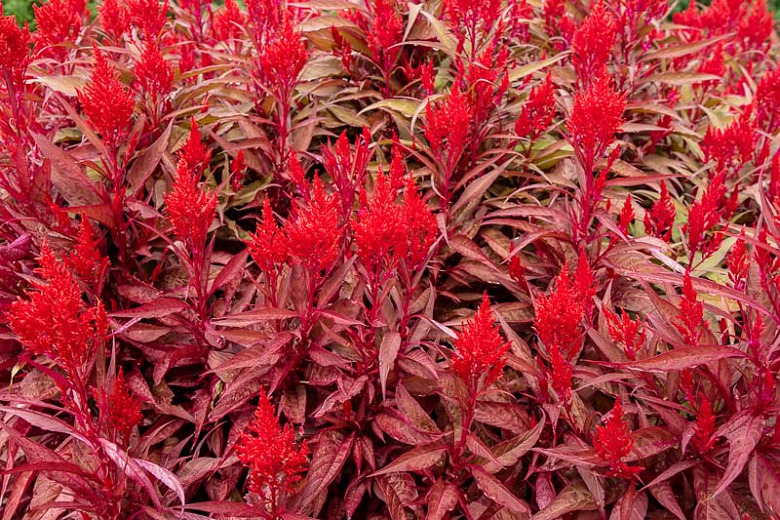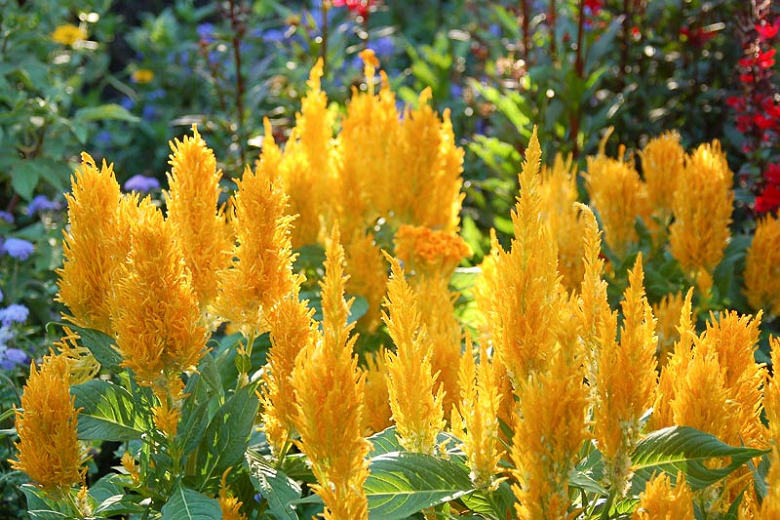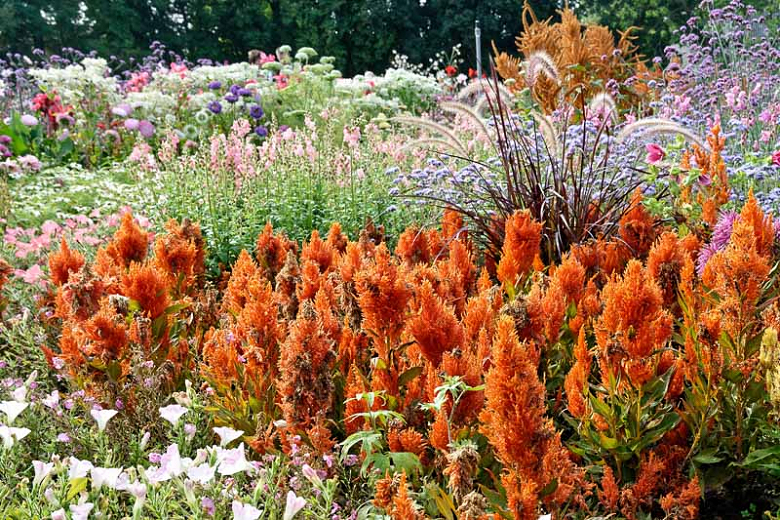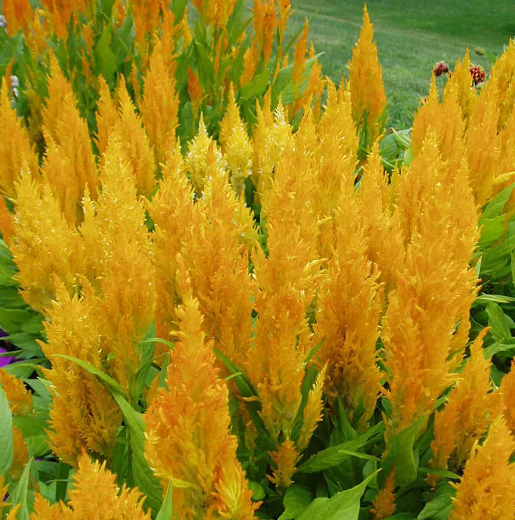Celosia argentea var. cristata (Plumosa Group) Flamma Orange
Vigorous with excellent garden performance, Celosia argentea var. cristata (Plumosa Group) ‘Flamma Orange’ is a compact, bushy annual boasting a profusion of fiery orange plumes, 5 in. long (12 cm), that remain colorful all season and do not fade.
Vigorous with excellent garden performance, Celosia argentea var. cristata (Plumosa Group) 'Flamma Orange' is a compact, bushy annual boasting a profusion of fiery orange plumes, 5 in. long (12 cm), that remain colorful all season and do not fade. Blooming from late spring to fall, this dwarf Celosia variety has numerous branches, each with a strong flower plume, as well as secondary blooms, which give a long-lasting floral show in the garden. Flamma Orange boasts a vigorous field performance and has exceptional heat and humidity tolerance. This tropical plant is effective as a bedding plant or in containers. Like all Celosia plumosa, flowers can be cut for arrangements or dried as an everlasting bouquet.
- 2022 All American Selections Ornamental Winner.
- Grows up to 8-10 in. tall (20-25 cm) and 6-7 in. wide (15-18 cm).
- Performs best in full sun or light shade in humus-rich, moderately fertile, consistently moist, well-drained soils. Thrives in heat and humidity and tolerates dry soils and drought once established. Plant in a location sheltered from strong winds.
- A great choice for beds and borders, edging, containers, cottage gardens, and cutting gardens. Excellent for fresh or dried flower arrangements and bouquets.
- While Celosia is mostly grown for its flowers, Celosia is edible. Leaves, tender stems, and young flower spikes can be eaten boiled, or cooked in sauce or stew with other ingredients. The leaves are a nutritious addition to the vegetable garden. They contain high levels of beta-carotene and folic acid.
- Low maintenance, add this charming annual plant to the landscape and you will be rewarded with bees, butterflies, and other pollinators, beneficial insects, and songbirds.
- In warm winter climates, such as USDA hardiness zones 10 and 11, Cockscomb can also be grown as a perennial.
- Deadhead spent flowers to prolong bloom.
- Harvest flowers when they are fully developed and before they begin to make seed.
- Propagate by seed. Sow seeds outdoors after all danger of frost has passed or indoors 6-8 weeks prior to the last spring frost date.
- No serious pest or disease issues. Keep an eye out for glasshouse red spider mites, glasshouse whitefly, and aphids when grown under glass. Susceptible to root rot. Crowding, rain, and high humidity will cause flowers to rot. This plant is frequently damaged by deer.
- Celosia argentea is native to Tropical Africa.
Requirements
| Hardiness | 2 – 11 |
|---|---|
| Heat Zones | 2 – 9 |
| Climate Zones | 1, 1A, 1B, 2, 2A, 2B, 3, 3A, 3B, 4, 5, 6, 7, 8, 9, 10, 11, 12, 13, 14, 15, 16, 17, 18, 19, 20, 21, 22, 23, 24, H1, H2 |
| Plant Type | Annuals, Perennials |
| Plant Family | Celosia |
| Exposure | Full Sun |
| Season of Interest | Spring (Late)Summer (Early,Mid,Late)Fall |
| Height | 8" – 10" (20cm – 25cm) |
| Spread | 6" – 7" (15cm – 17cm) |
| Spacing | 7″ (17cm) |
| Water Needs | Average |
| Maintenance | Low |
| Soil Type | Chalk, Loam, Sand |
| Soil pH | Acid, Alkaline, Neutral |
| Soil Drainage | Moist but Well-Drained, Well-Drained |
| Characteristics | Dried Arrangements, Cut Flowers, Plant of Merit, Showy |
| Tolerance | Drought, Dry Soil |
| Attracts | Bees, Butterflies |
| Garden Uses | Beds and Borders, Edging, Patio and Containers |
| Garden Styles | Cutting Garden, Informal and Cottage |
